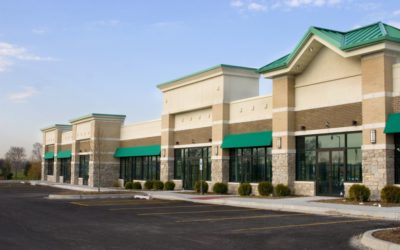1. More Top Firms Invest into PropTech
Venture capital firms aren’t the only ones betting on real estate tech, as legacy commercial real estate owners are getting in on the action more and more often. Earlier this year, JLL launched “Spark”[1], a division dedicated to PropTech investments and research. Rudin Management started a similar fund in 2015, and have since invested in companies such as VTS, Nestio and Honest Buildings[2]. With massive companies like Brookfield and Blackstone also driving millions into the industry, we expect this to become the norm for larger real estate firms starting in 2019.
- Slowdown Will Lead to More Cautious Decision Making
At this time last year, many CRE professionals suspected the remarkable growth we saw in 2017 could not continue into 2018, but – for the most part – it did. This year, there is an even greater consensus that a downturn is coming, and we’re hopping on the bandwagon. With interest rates rising rapidly along with production and equipment costs[3], many believe a slowdown needs to happen. If it does, we’ll likely witness CRE owners use capital more prudently. PropTech transaction volume will favor the more proven companies and the technologies that can most clearly demonstrate ROI.
- Drones Will Become Commonplace
Once perceived as a boogeyman of privacy loss, drones are now delivering our packages, supporting disaster relief and quietly disrupting the commercial real estate industry. Marketers are enhancing property images by using drones to cheaply deliver stunning 360-degree captures[4]. Developers are now using drones to monitor project progress, as well as to mitigate risk. Surveys that require high elevations can now be performed accurately by drones, meaning your employees don’t have to make the climb to the top of projects. Expect more CRE firms to start considering and implementing drones in 2019.
- More Experiential Offerings for Tenants
Space is not just a commodity. Office tenants view their space as a service, and they expect to be engaged by the building they spend so much of their time in. This is driving property managers and owners to integrate experiential elements into their properties in higher numbers than ever before. In fact, of the attendees at Realcomm’s “Technology and the Impact to a Commercial Real Estate Strategy” webinar, 63% agreed technology that helps improve the occupant experience will impact them the most next year[5]. As tenant work-life harmony continues to grow as a focus for building managers and owners, we expect this trend to continue.
- Data is Disrupted
Some of the most significant disrupters in the industry have been those tools and platforms that allow CRE professionals to reevaluate the ways in which they access and analyze market data. In the past, CRE analysts would spend 80% of their time gathering data, and the other 20% finding actionable insights, the important aspect of the job. CRE Technology has flipped those digits, allowing for more efficient workflows and more time spent analyzing data than pulling it. Technology has also helped protect CRE data. The personal and financial nature of the data contained in Real Estate information systems makes these systems likely targets for attack, and the new wave of cloud-based data storage platforms are built for cyber-security.
- Commercial Leasing goes Online
Currently, there is one company that controls basically all US real estate data, and along with it the entire CRE advertising business, and that’s CoStar. According to industry experts, 2019 will finally be the year they see competition in the office leasing market. Zillow, known for its huge database of residential listings, is considering the jump[6] to commercial spaces, and a number of other startups are looking to disrupt commercial leasing. Squarefoot[7] and Truss[8] are startups that aim to simplify and expedite the online office leasing process specifically for small and midsize companies, and both raised millions in funding during 2018[9]. RealMassive[10] is another early-stage disrupter and is probably the closest thing our industry has to Zillow. Many brokerages already use RealMassive as a supplement to their internal marketing. Overall, we expect the world of office leasing to look entirely different by the end of 2019.
- 2019 Won’t be the Year of the Autonomous Car
If you Google, “Commercial Real Estate Predictions for 2019,” one you will frequently see is the idea that 2019 is the year autonomous cars disrupt commercial real estate. I’m not buying it, for one reason: people still don’t like the idea. A 2018 Reuters poll showed only 27% of respondents would feel safe getting into a self-driving car[11]. Before they disrupt any industry, autonomous vehicles will first need to earn the trust of the public. I see a lot of obstacles to pass through before that becomes true, which leaves plenty of breathing room for commercial real estate to adjust for self-driving cars.
- Wellness is the New LEED
In recent years we have seen a shift in focus from sustainability to overall wellness. While there are certainly overlaps between the two concepts, wellness is a broader area of concern regarding a building’s total impact on its tenants and the surrounding city. This shift comes along with a greater focus on the office building’s impact on work-life balance, as well as concerns about health insurance costs. CRE owners are now integrating new air quality systems, designing apps to connect tenants with gyms and offering healthy food options, all in the name of employee wellness. Just like LEED, you can now have your building become wellness certified through the International WELL Building Institute[12].
- More Tech Focused on Tenant Communication & Management
Today there are more options for space than ever before, and CRE players are gradually realizing that building ongoing relationships with their tenants is key to retention. 69% of office tenants say they have never interacted with their property manager and don’t know their name[13]. I expect CRE players to use tech to combat this, and while there are complete Tenant Relationship Management systems like VTS[14] and Assetti[15], there are mobile apps making waves in the space as well. Bixby[16] and Skyrise[17] are both applications that feature tenant management tools, but while Skyrise is specific to office buildings, Bixby has features for both residential and office tenants. With Skyrise, tenants can book amenities and chat amongst each other, and with Bixby, tenants can deliver rent payments, coordinate package delivery, and submit maintenance requests.
- The Coworking Industry Develops
With coworking spaces expected to make up 30% of all of office portfolios by 2030[18], it isn’t exactly surprising to be seeing new companies hoping to break into the market to challenge WeWork. Both Knotel[19] and Industrious[20] are now in several top markets, but neither have reached anywhere close to the notoriety WeWork has achieved. Techspace[21] and Green Desk[22] are more niche takes on the Coworking concept, with Techspace marketing specifically to software professionals, and Green Desk differentiating itself with eco-friendly spaces. We expect some of these companies to make important CRE partnerships in 2019, allowing them to better compete with WeWork.
- Survival of the Fittest
The exponential growth of real estate technology has left the industry saturated with startups, competitors and new options. This is typical of a fledgling industry, but as the market matures, we’ll likely see companies begin to fail, leaving the best of the best to be successful. Sohail Rashid – Founder and CEO of View My Chain[23] – put it best: “If you are providing a solution with a clear, tangible and short-term ROI then it’s a massive opportunity. If not, then this is a challenge. Therefore, we may see a number of PropTech start-ups pivot and/or disappear, but I do expect the quality of those that remain increase. I think when we enter 2019, we will see less but bigger and more profitable (and ultimately, more successful) PropTech businesses left.”[24]
By Liam Kerins




